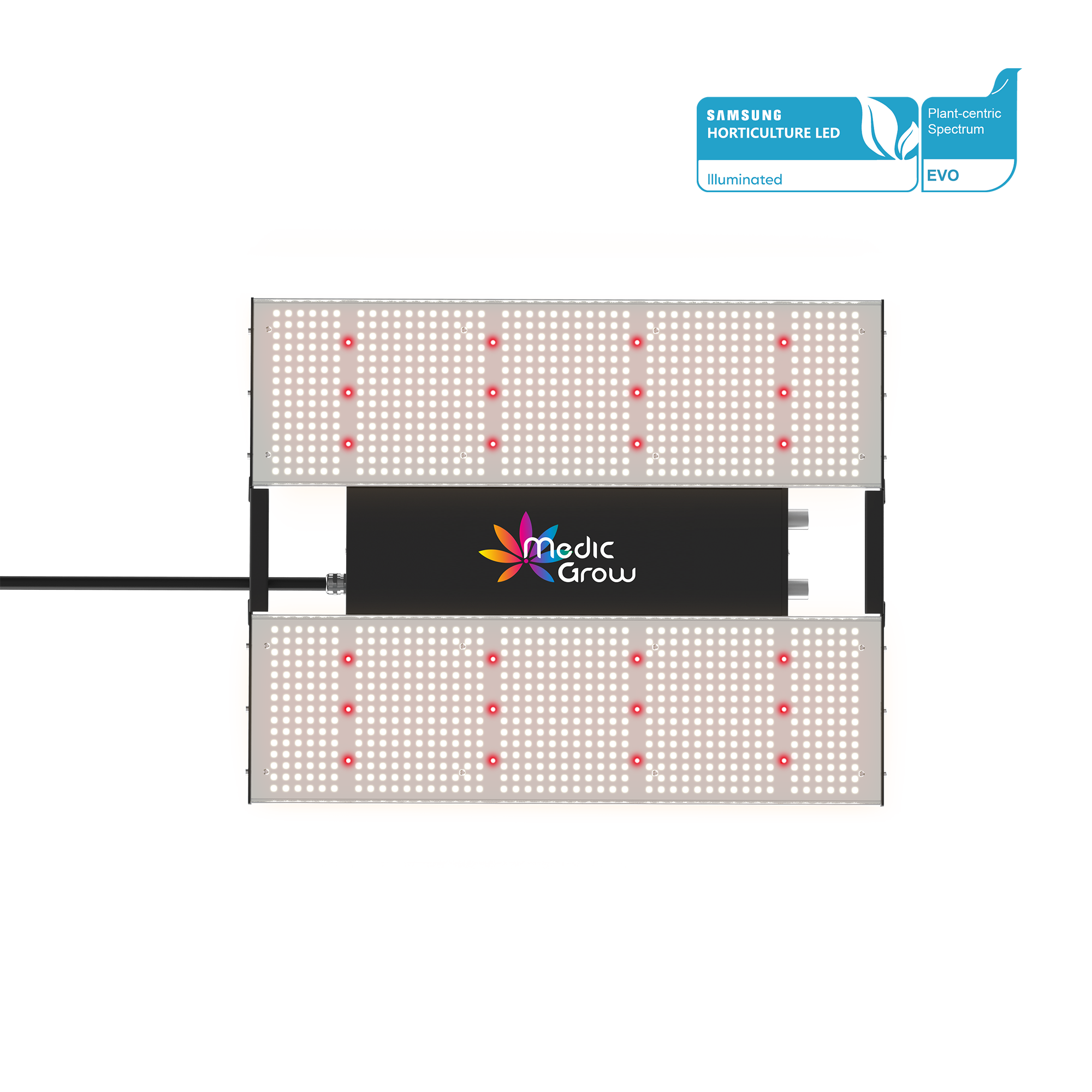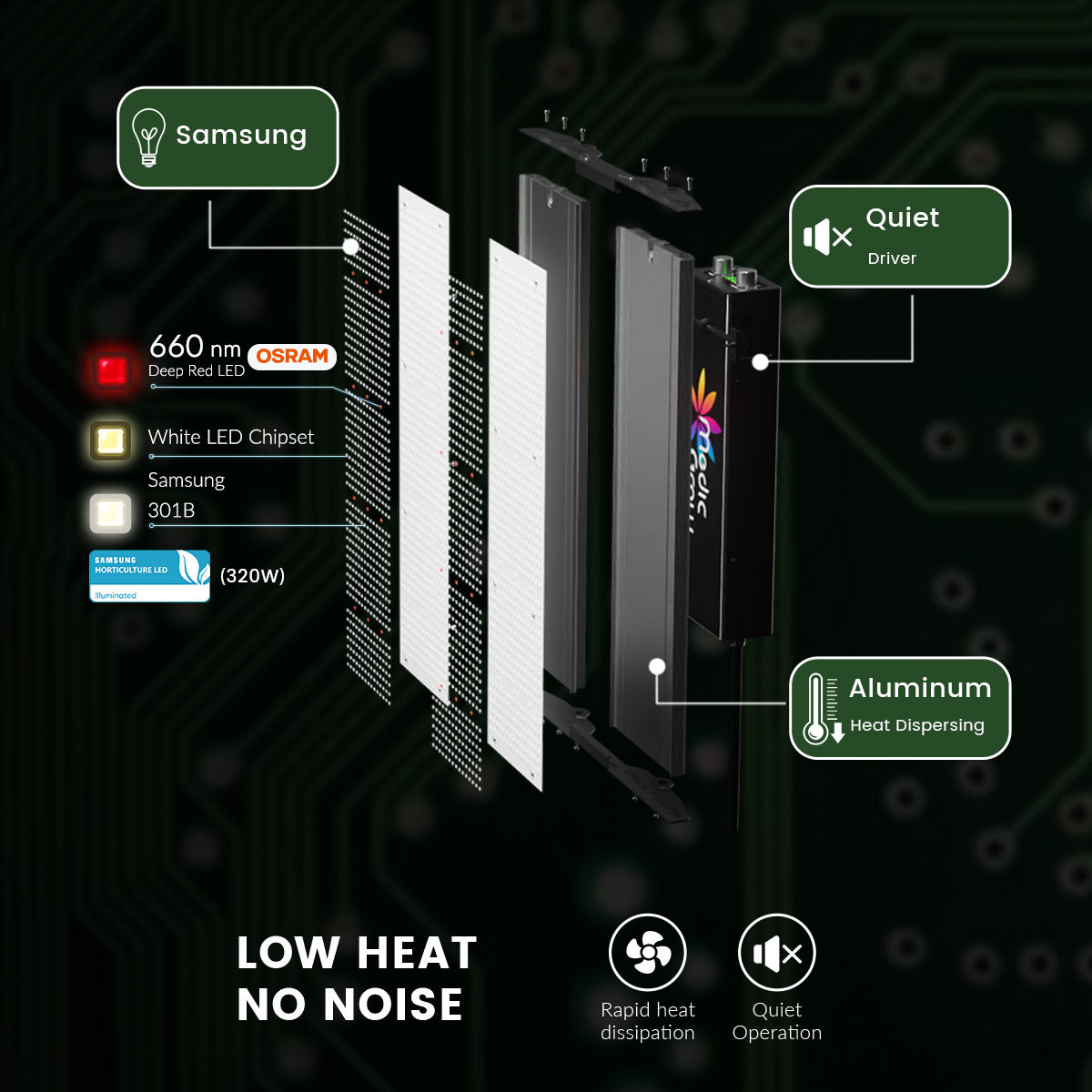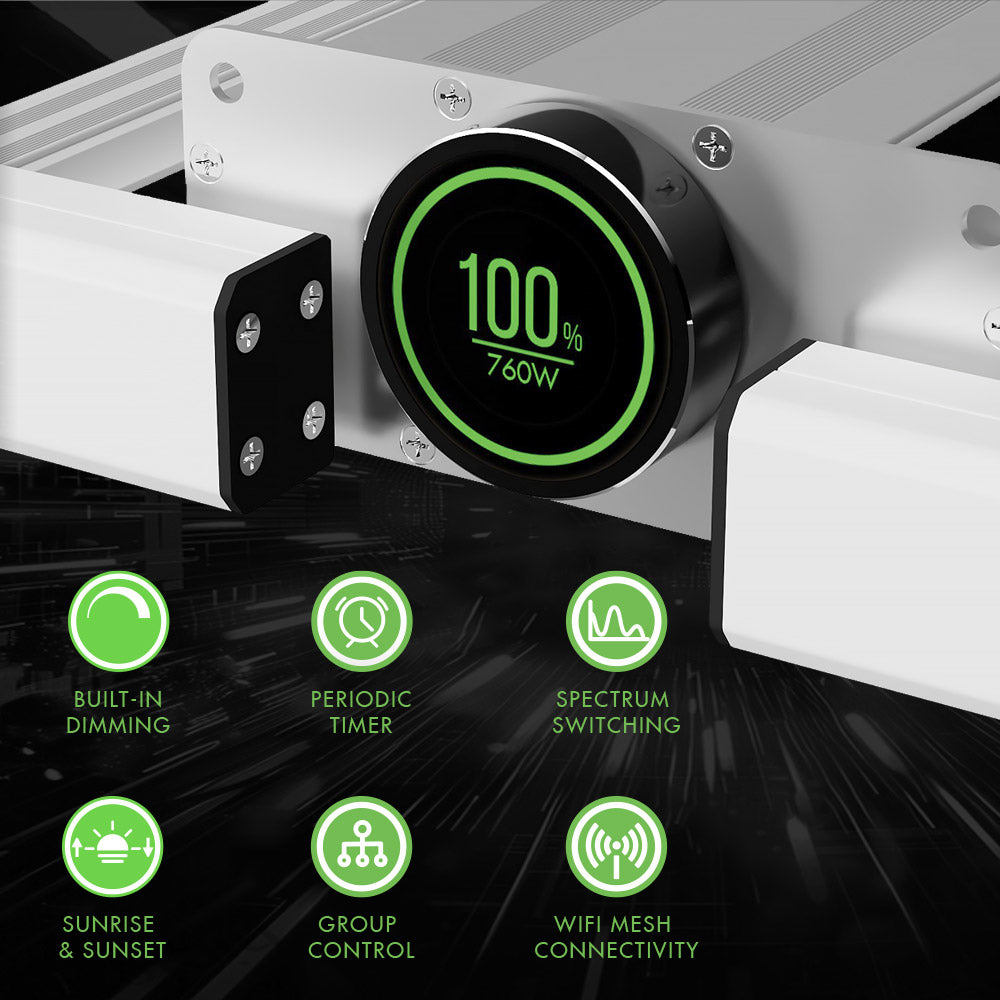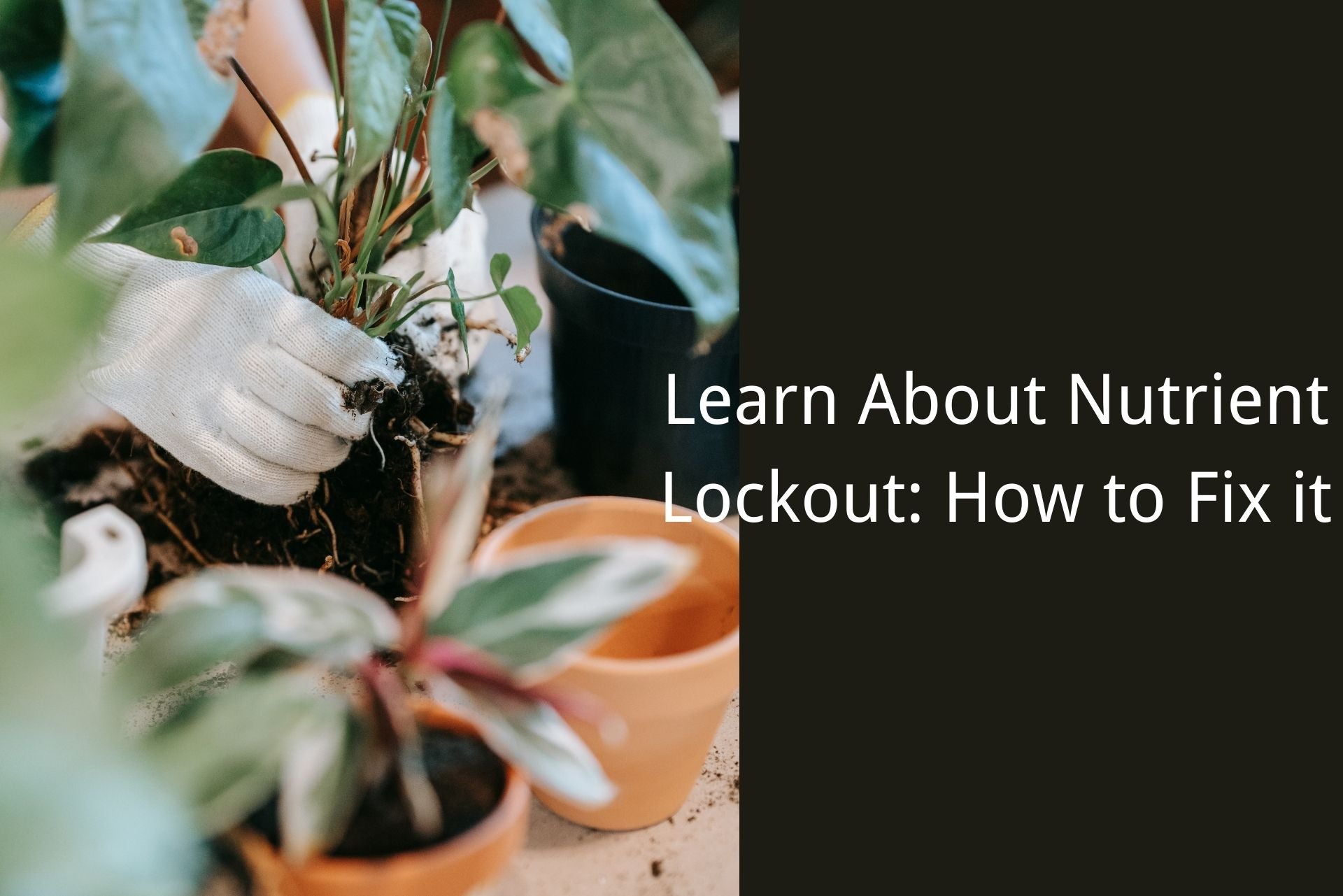
Learn About Nutrient Lockout: How to Fix it
Indoor growers with the help of grow lights need to deal with dozens of problems to keep their plants healthy and obtain optimal yield. One of those problems is Nutrient Lockout.
Nutrient Lockout is a serious problem for indoor growers that must be addressed at the right time. Otherwise, plants could die. Therefore, indoor growers should know about nutrient lockout so that they can deal at the right time.
In this article, we will address nutrient lockout in detail. We will discuss how you can recognize, fix, and prevent it.
- Part 1: What is Nutrient Lockout?
- Part 2: Signs of Nutrient Lockout
- Part 3: Reasons for Nutrient Lockout
- Part 4: How to Fix Nutrient Lockout?
- Part 5: How to Avoid Nutrient Lockout When Growing?
Let’s start the discussion.
What is Nutrient Lockout?
Nutrient lockout is a problem associated with indoor plants. When plants suffer from it, they do not absorb the required nutrients from the soil even if the nutrients are present.
In simple words, the soil medium has nutrients, but the plants cannot absorb them. They lose the capability of absorbing nutrients. Therefore, it is a severe problem that causes nutrient deficiency in plants.
In the worst case, the plants might die.

Image Source: advancednutrients.com
The correct diagnosis at the right time is essential. The diagnosis is difficult because the symptoms are quite similar in most problems.
In the nutrient lockout, the signs are similar to the nutrient shortage in the soil because in both cases, plants do not get the required nutrients; only the root cause is different.
In addition, the right time is also crucial as you can reverse or cure nutrient lockout at the initial stage. Otherwise, the plants will die because of nutrient deficiency.
An indoor grower should know the signs of nutrient lockout so that he can easily recognize the problem at the right time.
Signs of Nutrient Lockout
There are various signs of nutrient lockout. The problem is that the signs of nutrient lockout are similar to the signs of nutrient scarcity in the soil medium.
Both these problems cause nutrient deficiencies in plants; therefore, their signs are similar.
In addition, some signs are similar to signs that come because of under-watering, over-watering, windburn, and a few other problems.
Special attention and knowledge are required to recognize nutrient lockout.
The first sign of nutrient lockout is limp in the leafy portion, including the stems. The foliage appears to be weak because of nutrient deficiency. You will also notice the yellowing of leaves. There could be slight leaf burn as well, but it won’t be severe.
Growers also get confused because of nutrient burn. They need to understand nutrient burn vs nutrient lockout.
In nutrient burn, the plant absorbs more nutrients than it requires. You will notice yellow or brown tips of leaves in nutrient burn. The only difference between the two is that in the nutrient lockout, the stem and leaves are limp, but in the nutrient burn, this never happens.
In the case of a nutrient lockout, the growth of your plant is slowed down. It is affected badly, and you don’t get the optimal growth and yield.
The signs we have discussed are quite similar to the signs that are shown in other problems. Therefore, a sign is needed to create a differentiation.
Another way to know whether the plant is suffering from nutrient lockout or not is by doing a pH check.
It is one of the causes of nutrient lockout. The pH should be between 5.5 and 7.0. If the pH is not in the required range, you need to balance it to solve the problem.
However, even if the pH is right, the plant could suffer from the nutrient lockout, and it happens when you give excessive nutrients.
Reasons for Nutrient Lockout
Excess Nutrients
The visible cause of nutrient lockout is the excess of nutrients in the soil medium. We know that nutrients are present in the soil, and the plants absorb them through their roots.
But if there are excessive salts and nutrients, they bind up together due to a chemical reaction. Consequently, it becomes impossible for the plant to absorb them. In such a case, the plant cannot absorb the required nutrients for its growth.
Improper pH
The root cause of nutrient lockout is improper pH. Due to excess nutrients and salts, there can be an imbalance in the pH.
When the pH crosses its favorable range of 5 to 6.3, some nutrients are neglected while some are preferred.
All nutrients have a certain favorable pH value. For instance, Potassium, Sulfur, Calcium, and Magnesium prefer pH 8-8.5, while Phosphorus and Manganese are neglected at this level. But the favorable range we have mentioned is the ideal pH when all nutrients are absorbed.

Image Source: scienceinhydroponics.com
When the pH is disturbed, some nutrients are absorbed more, so plants have an excess of those nutrients. On the other hand, plants suffer from the deficiency of other nutrients.
It creates a nutrient lockout situation because some of the nutrients are not absorbed.
All growers need to know how they can fix nutrient lockout so that they can take action at the right time. Let’s see how you can fix nutrient lockout.
How to Fix Nutrient Lockout?
When you recognize your plants are suffering from the nutrient lockout, the first thing that you need to do is stop feeding them. Your plants already have excess nutrients, so you should stop feeding more.
If you want to fix nutrient lockout, the best way is flushing. It will reverse the problem, and the plant will be able to absorb the nutrients again.
Flushing means running water in the soil medium. You need to overwater the soil to remove the excess nutrients and bring the pH level back to normal.
Due to the flooding of water, the bonding that was created between nutrients and slats is reversed, and the minerals are diluted. Consequently, you have a favorable pH level in the soil.
You need to use pH-balanced water to flush the soil. It will help in reducing the salt build-up in the soil and bring the pH level back to normal.
After flushing your plants, let the soil dry. It is necessary to dry the soil before you water it again. Otherwise, the roots will not be able to breathe, and consequently, they will rot.
Grow lights help in drying the soil.
LED grow lights, especially full-spectrum growl lights, are preferred because they do not harm the plant through excess heat and help in drying the soil. You can also adjust the brightness level of the LED if there is a controller in it. For instance, Fold 800W LED grow lights allow you to adjust the brightness according to the requirements.
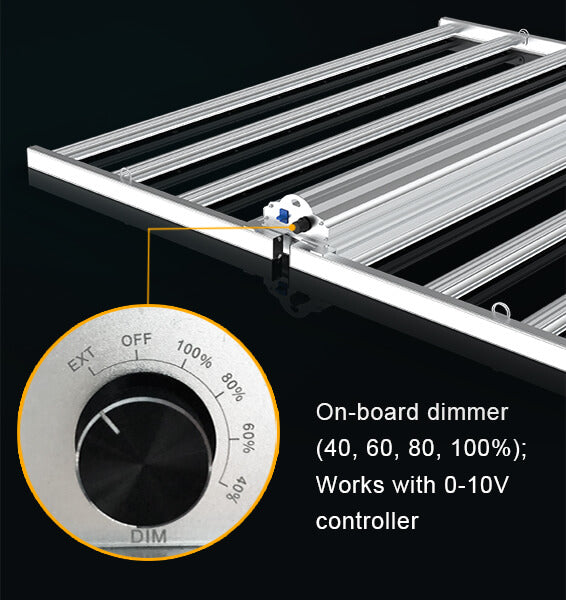
After drying with grow tent kits, you can rewater your plant and give nutrients, but do it gradually. Start with a little and measure the pH level regularly.
There is not an ideal nutrient lockout recovery time. The grower needs to give nutrients slowly because sudden change is not suitable for plants.
Through flushing, your plants will not suffer from nutrient lockout. But you should know how you can avoid it. Let’s discuss how you can avoid nutrient lockout in plants.
How to Avoid Nutrient Lockout When Growing?
We all would agree that prevention is better than cure. The saying is true in the case of nutrient lockout as well.
Undoubtedly, you can reverse nutrient lockout, and we have already discussed how you can do it. However it affects the growth of your plants and takes more time for the plant to give the optimal yield.
In addition, you waste time and money on dealing with nutrient lockout. Therefore, it is better to prevent it rather than deal with it.
Nutrient lockout during flowering is more severe because it can ruin your effort. When your flowers are near harvesting, the plants need extra care to prevent nutrient lockout in flowers.
pH level is the root cause of nutrient lockout, so you need to make sure it is in the ideal range. There are two things you can do to avoid nutrient lockout in plants.
Those are monitoring the pH level and maintaining it. Let’s see how you can do both.
Keep an Eye on the pH Level
The pH level of the plants has the utmost importance, and at this stage, you already have the whole idea of that.

Image Source: zeltazeme.com
Monitoring pH is quite easy. You need a pH meter for that. It is an inexpensive device that can help you in preventing nutrient lockout.
Check the pH level daily. It will help you keep the level in optimal condition. Using a pH meter is quite easy; you just need to put it in the soil and read it.
The pH level should be between 5.5 and 7. If the level goes out of the range, you need to maintain it.
Maintain the pH Level
There are various ways that growers adopt to maintain the pH level. If there is any unwanted change in the pH, you can flush the plant and reintroduce fertilizers.
It is better to use organic fertilizers rather than non-organic fertilizers. Non-organic fertilizers have salts in them. These salts are the cause of nutrient lockout in the future. In contrast, nutrient lockout in organic soil is rare.
Some growers also use pH adjusters. These are solutions to increase and decrease the pH level, and growers can use them as needed.
We have discussed that flushing requires pH-balanced water. Some growers also use plain water, but it is better to use the pH-balanced one.
Some growers, especially commercial growers, invest in reverse osmosis water. They use it to adjust the pH of water as needed.
Related Posts:
When Should You Replace Your Grow Light Bulbs?
Sealed Grow Room Basics: What Growers Should Know?
How To Maintain The Ideal Grow Room Temperature
Featured Products
Blog Posts
Contact Us with Any Idea!
- Choosing a selection results in a full page refresh.
!















